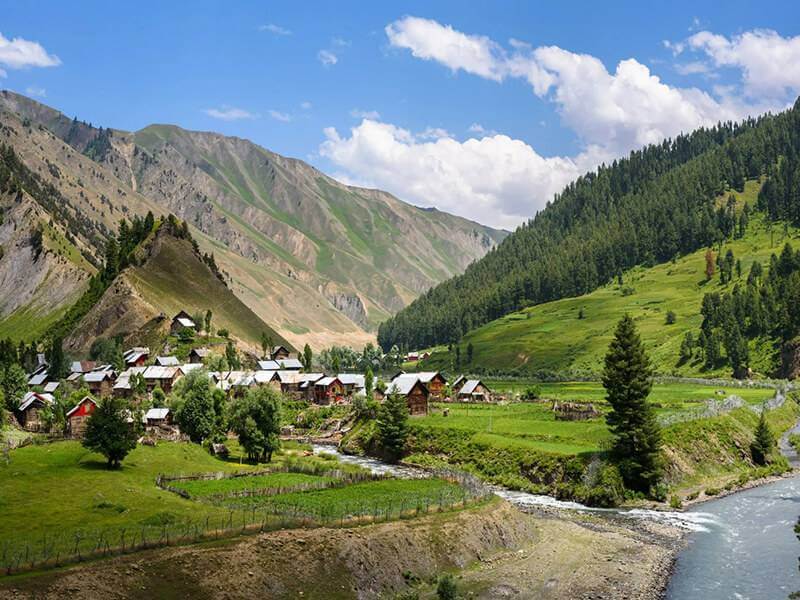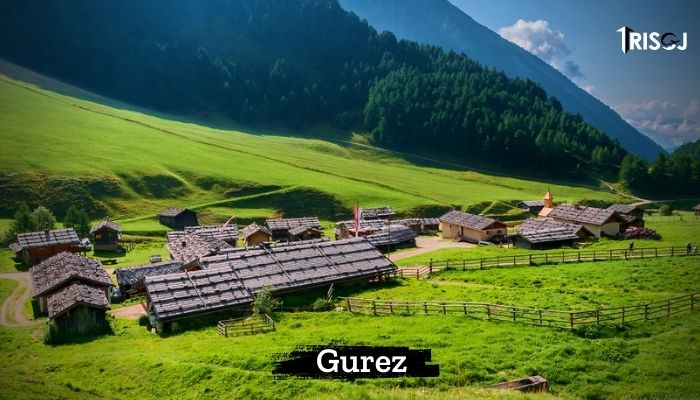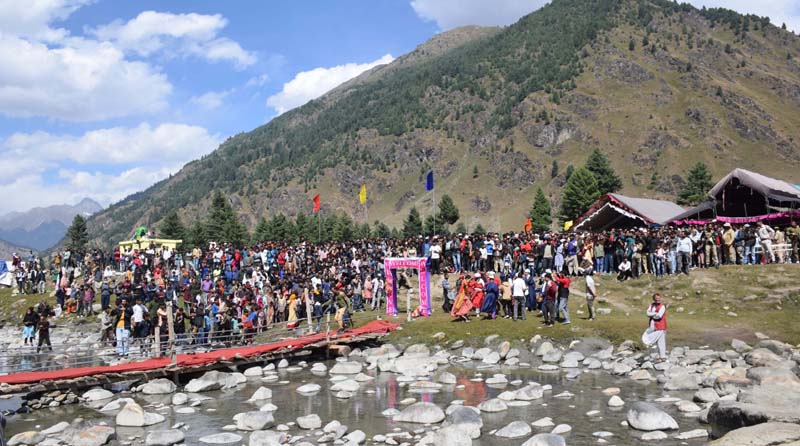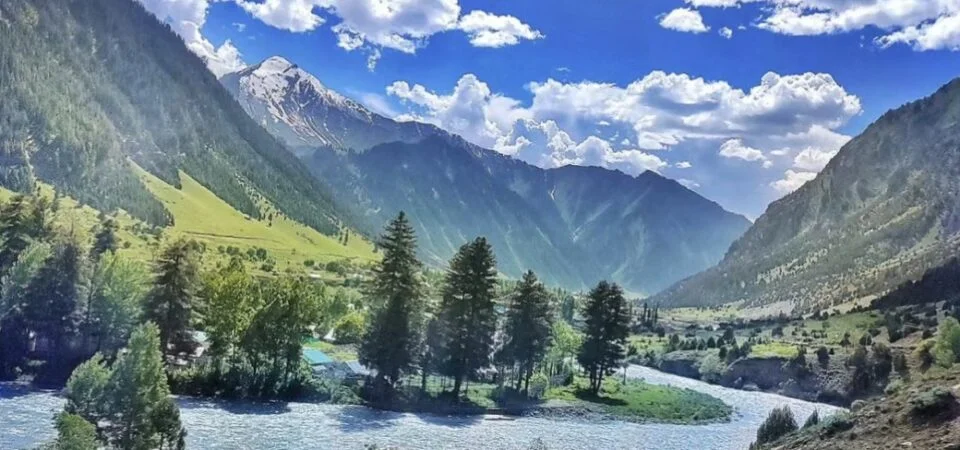More About Gurez
GUREZ VALLEY: A SYMPHONY OF NATURE, CULTURE, AND HISTORY
Nestled in the high reaches of the Himalayas, Gurez Valley is a mesmerizing tapestry of natural beauty, rich cultural heritage, and a history that echoes through the ages. This remote valley, located in the northernmost part of the Indian subcontinent, remains a hidden gem waiting to be discovered by those seeking an escape into pristine landscapes and a glimpse into the region’s storied past.
Geography and Landscape
Gurez Valley is situated in the Union Territory of Jammu and Kashmir, India, bordered by Pakistan-occupied Kashmir to the west and the Line of Control. The valley is ensconced between snow-capped peaks, with the mighty Himalayas forming a natural fortress around it. The Kishanganga River, also known as the Neelum River, meanders through the valley, adding to its scenic allure. The geographical isolation, coupled with the challenging terrain, has contributed to Gurez’s untouched and pristine environment.
The valley experiences harsh winters, with heavy snowfall closing off access routes, making it accessible only during the warmer months. This inaccessibility has helped preserve Gurez’s natural beauty, creating an unspoiled haven for those who venture into its folds.


Historical Tapestry
The history of Gurez is a narrative woven with threads of ancient trade routes, invasions, and cultural exchanges. As a crossroads on the Silk Route, Gurez played a pivotal role in connecting Central Asia with the Indian subcontinent. Traders and travelers traversed the treacherous mountain passes, bringing with them not only goods but also ideas, languages, and traditions.
During the medieval period, Gurez became a strategic outpost for various empires, including the Mughals. The Mughal rulers recognized the valley’s geopolitical significance and left their mark in the form of forts and caravanserais. The remnants of these historical structures, such as the Habba Khatoon fort, stand as silent witnesses to the region’s past, speaking of a time when Gurez was a thriving hub of trade and cultural exchange.
During the medieval period, Gurez became a strategic outpost for various empires, including the Mughals. The Mughal rulers recognized the valley’s geopolitical significance and left their mark in the form of forts and caravanserais. The remnants of these historical structures, such as the Habba Khatoon fort, stand as silent witnesses to the region’s past, speaking of a time when Gurez was a thriving hub of trade and cultural exchange.India in 1947 added a new layer of complexity to the region’s history, as Gurez found itself straddling the borders of India and Pakistan.
Cultural Fusion
Gurez stands as a testament to the cultural fusion that has defined the region over the centuries. The valley became a melting pot where Central Asian, Persian, and Indian influences converged. The syncretic blend of these diverse cultural elements gave rise to a unique identity that is reflected in the architecture, language, and traditions of the people.
Gurez stands as a testament to the cultural fusion that has defined the region over the centuries. The valley became a melting pot where Central Asian, Persian, and Indian influences converged. The syncretic blend of these diverse cultural elements gave rise to a unique identity that is reflected in the architecture, language, and traditions of the people.
The language spoken in Gurez is an interesting amalgamation of various linguistic influences. While Kashmiri is widely spoken, there are traces of Shina, a language with roots in Central Asia. This linguistic diversity mirrors the historical interactions and trade relationships that have shaped the cultural landscape of Gurez.


Natural Beauty
Gurez Valley’s allure extends beyond its historical significance to the breathtaking beauty of its natural surroundings. The landscape is a symphony of snow-capped peaks, dense pine forests, and lush meadows adorned with vibrant wildflowers during the summer months. The Kishanganga River, with its crystal-clear waters, cuts through the valley, creating a serene and picturesque environment.
One of the standout features of Gurez is its alpine meadows, locally known as “paris.” These meadows come alive during the brief summer months, providing a striking contrast to the snow-clad landscape. The fragrance of wildflowers and the panoramic views of the surrounding mountains make these meadows a haven for nature lovers and trekkers.
The Habba Khatoon peak, named after the legendary Kashmiri poetess, offers a vantage point for breathtaking views of the valley. Treks to this peak are not only a physical challenge but also a journey through landscapes that have remained untouched by modern development.
The Tulail Valley, a sub-district within Gurez, is another jewel with its own unique charm. Surrounded by towering peaks, Tulail is characterized by traditional wooden houses, terraced fields, and a sense of tranquility that seems to transcend time. The residents of Tulail, known for their hospitality, offer a glimpse into the daily lives of a community deeply connected to its roots.
Gurez, once a stopover on the ancient Silk Route, has become an emerging destination for those seeking an offbeat and unexplored travel experience. The valley offers a range of attractions for visitors:
Tourist Attractions
Habba Khatoon Fort
This historical fort, perched on a hill, provides not only a glimpse into the past but also panoramic views of the valley. The fort is a reminder of Gurez's strategic importance in medieval times.
Tulail Valley
Beyond its cultural significance, Tulail is a visual treat with its traditional architecture and stunning landscapes. The valley is relatively unexplored, offering an authentic experience for those seeking solitude.
Dawar Town
Serving as the administrative headquarters of Gurez, Dawar Town is a blend of tradition and modernity. The local market is a vibrant hub where one can experience the daily life of the residents, and the ancient Jamia Masjid stands as a symbol of historical continuity.
Kishanganga National Park
For wildlife enthusiasts, the national park is a treasure trove of biodiversity. The park is home to various species, including the elusive snow leopard, Himalayan brown bear, and a variety of bird species.
Feroz Shah Memorial Park
Dedicated to the memory of Feroz Shah, a warrior from Gurez, this park is a peaceful retreat surrounded by lush greenery. The memorial serves as a testament to the valiant history of the region.

Challenges and Conservation
As Gurez Valley opens up to tourism, there are challenges that need careful consideration. Balancing the influx of tourists with the need to preserve the fragile ecosystem and cultural integrity of the region is crucial. Sustainable tourism practices, community involvement, and responsible travel are imperative to ensure that Gurez retains its pristine charm for future generations.
Preserving the traditional way of life and ensuring the equitable distribution of benefits from tourism among the local communities are vital aspects of sustainable development in Gurez. Efforts are being made to strike a balance between economic opportunities and the need to safeguard the environment and cultural heritage.
Gurez Valley, with its blend of history, culture, and natural beauty, is a destination that transcends the boundaries of time. As travelers venture into this Himalayan haven, they embark on a journey that unravels the layers of the past while immersing them in the untouched landscapes of the present. Gurez, with its ancient forts, traditional villages, and pristine meadows, stands as a testament to the resilience of a region that has weathered the tides of history while retaining its unique identity. In the heart of the Himalayas, Gurez invites those seeking an authentic and transformative travel experience to be a part of its rich narrative.